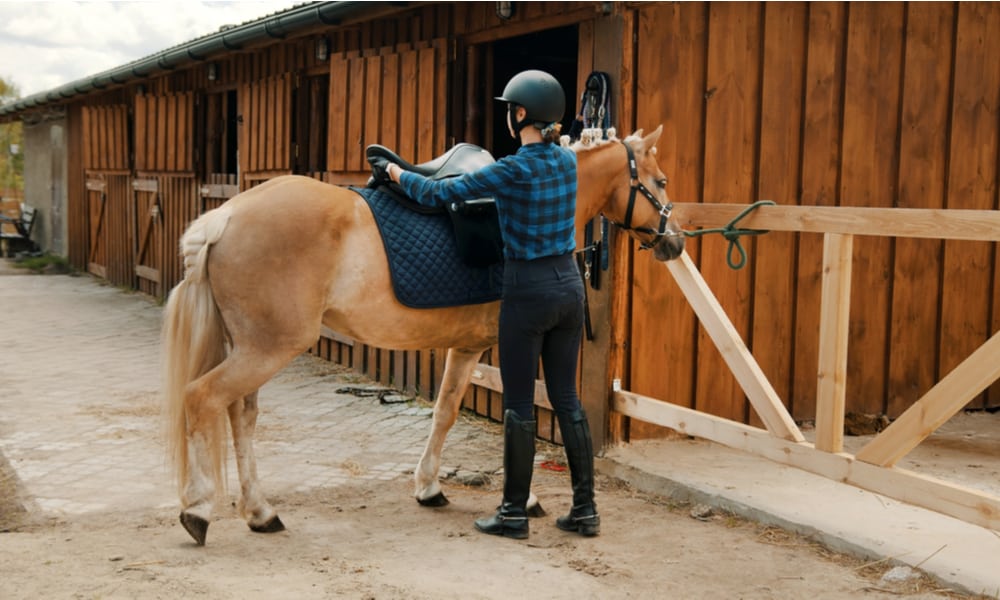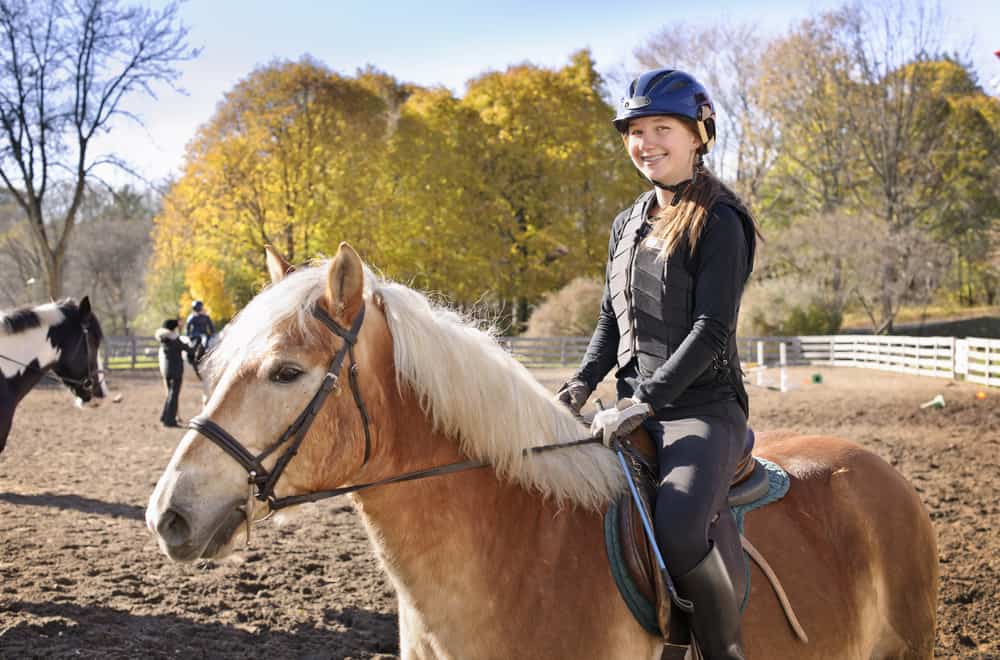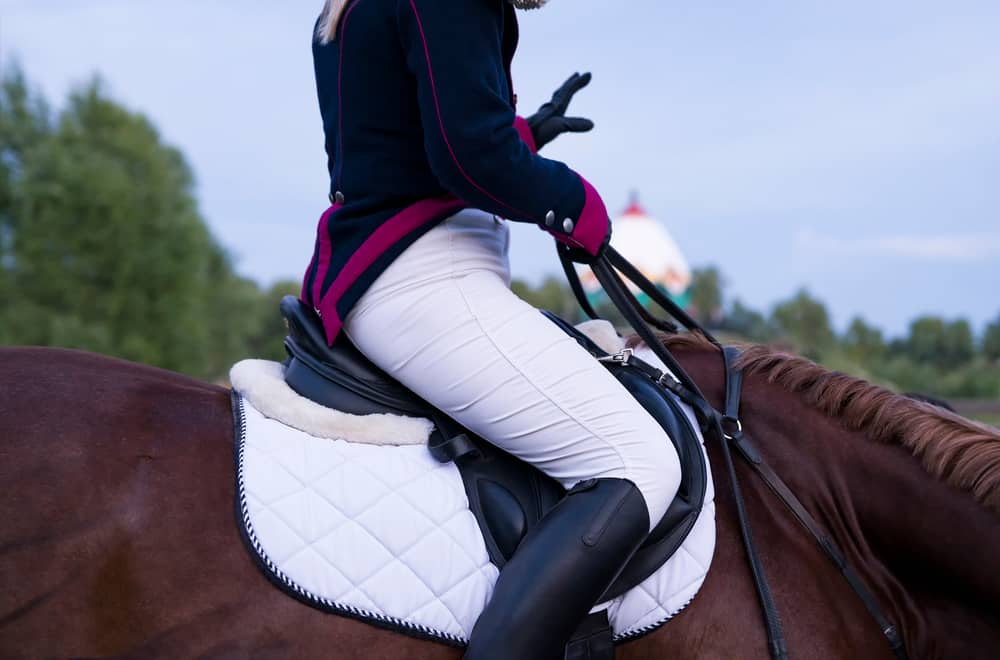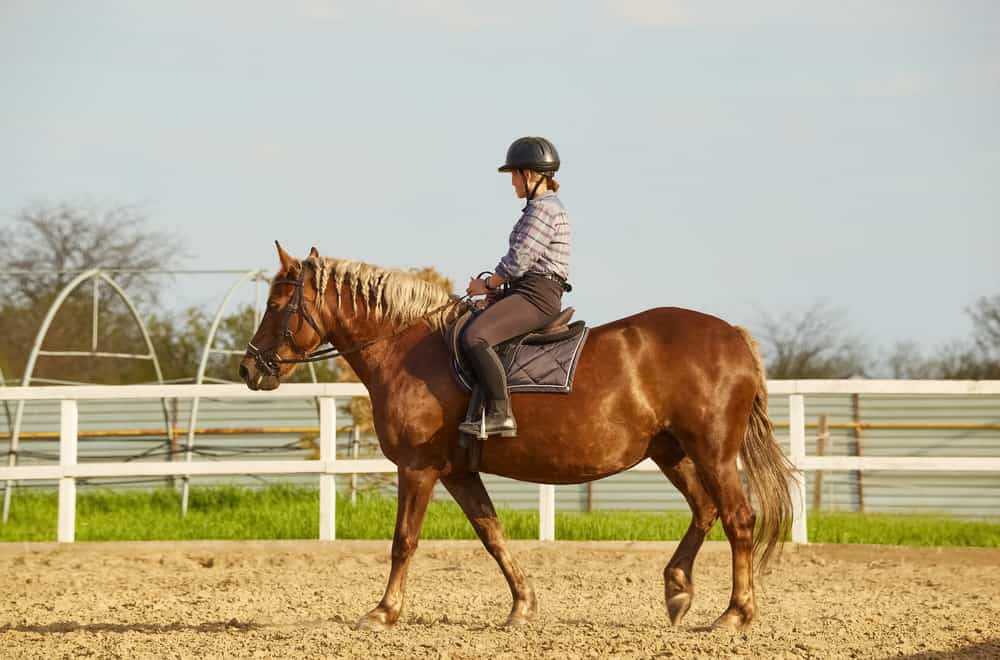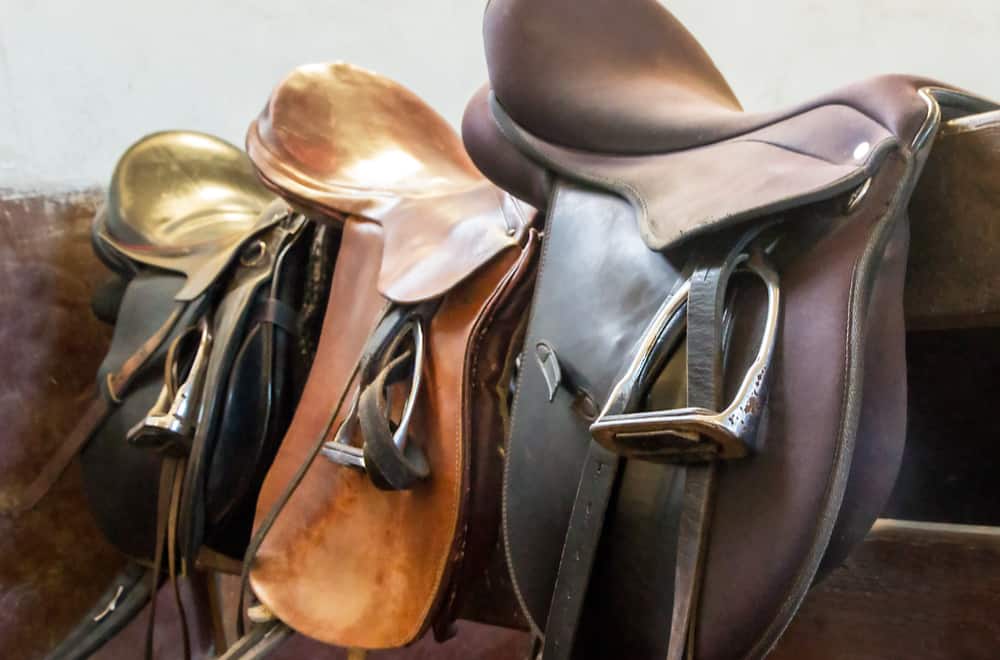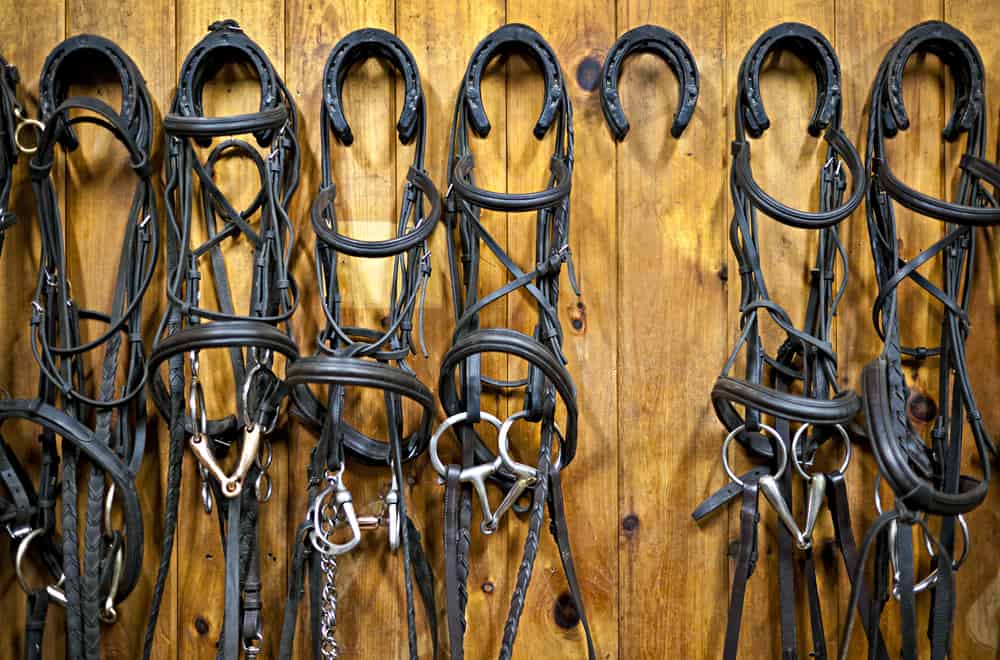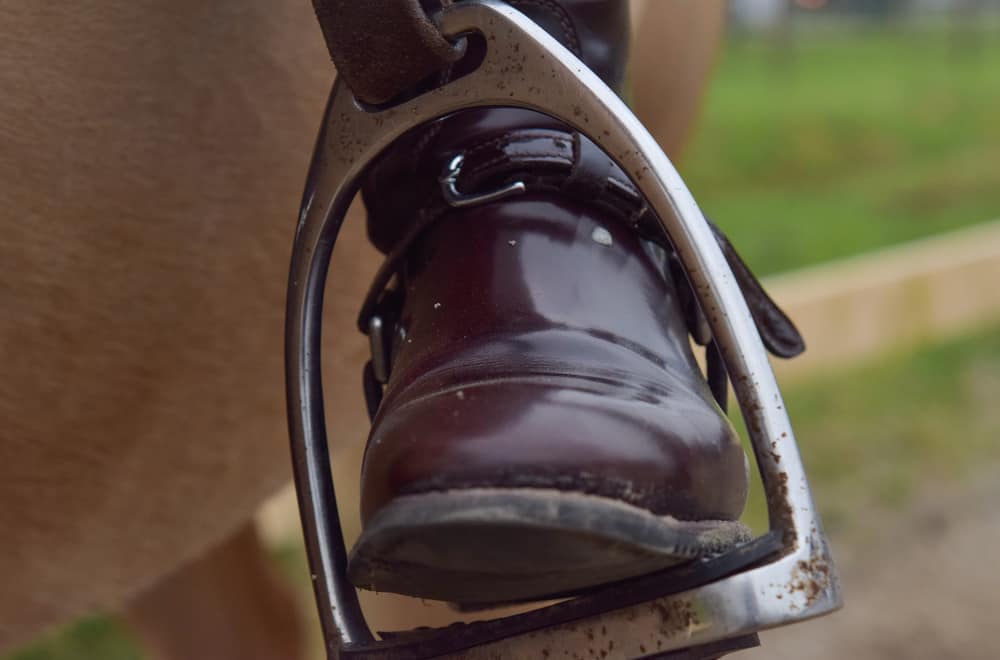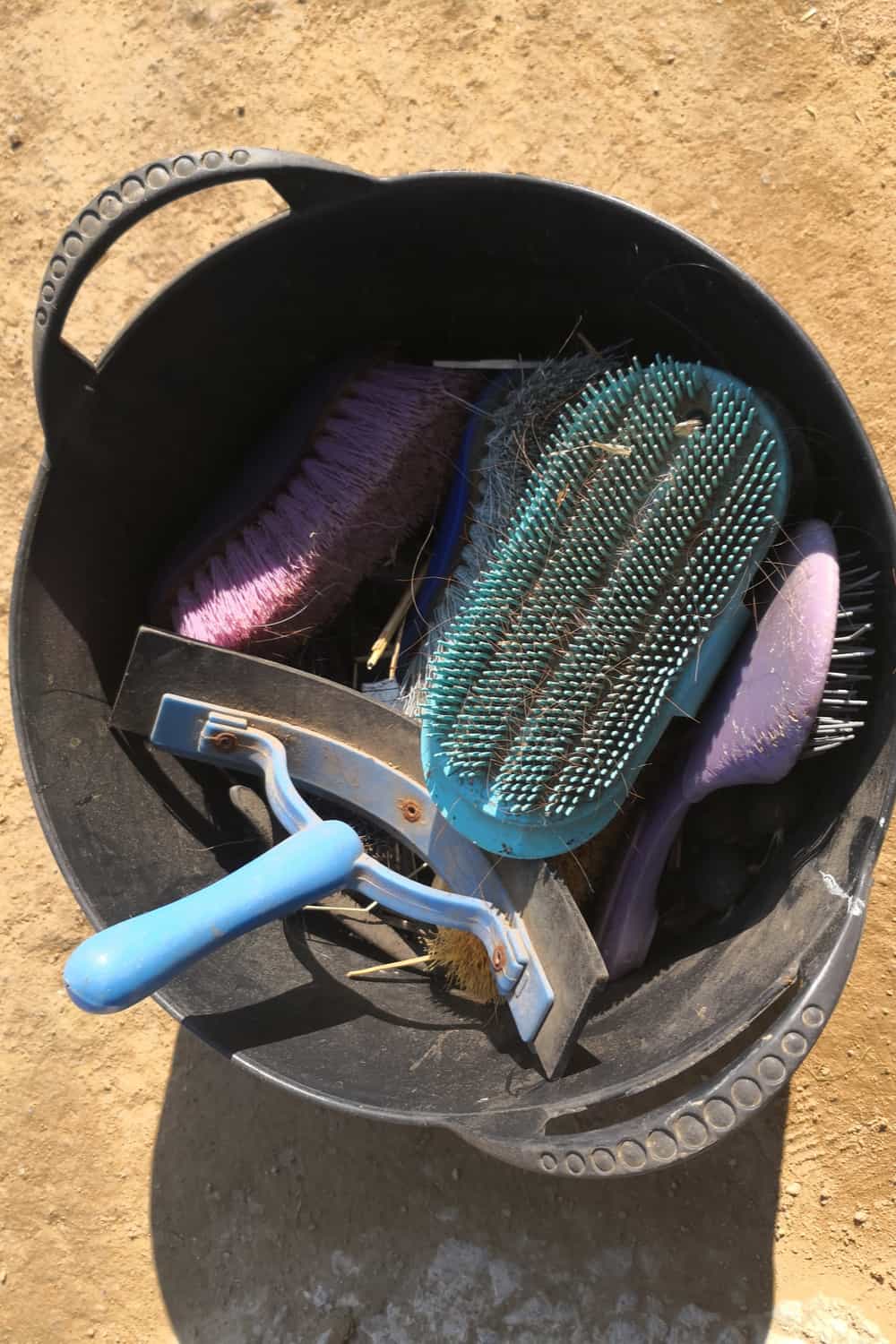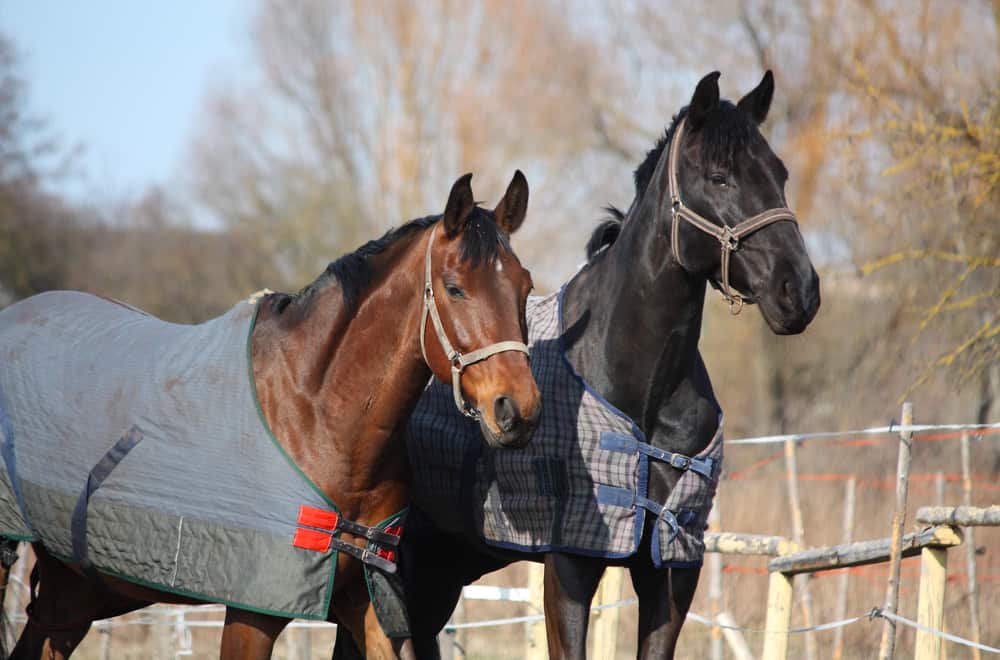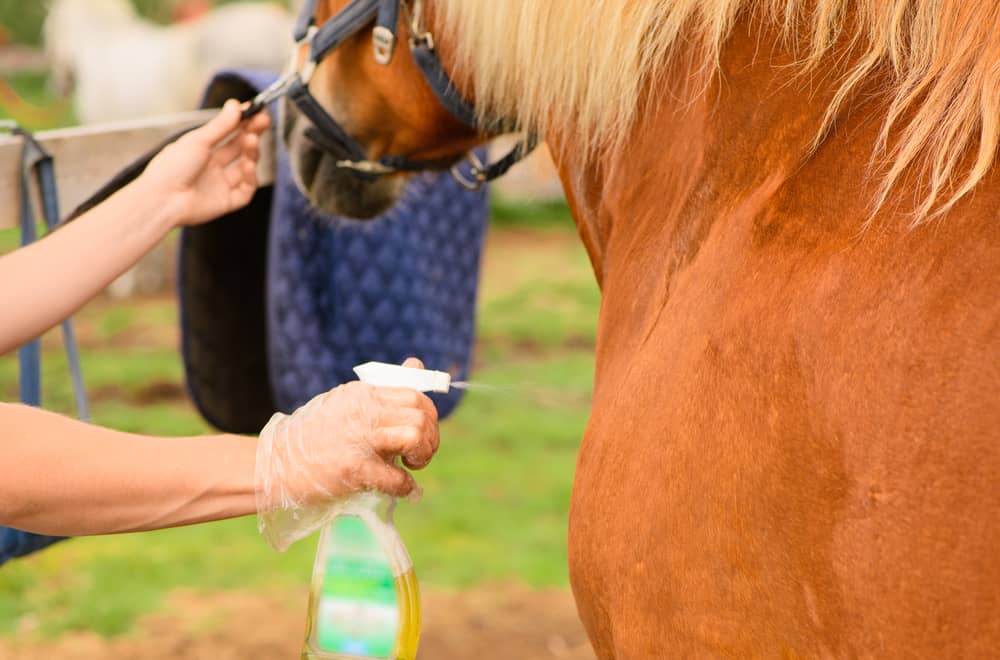Are you gearing up to ride a horse for the first time?
Horse-back is one of the most exciting hobbies and pastime activities.
But, like any equestrian sport, it can get expensive fast.
When you first get started with horseback riding, it is tempting to go all out and buy every piece of clothing and equipment you get your hands on.
This is not the way to go. You will soon find out that there is still so much you haven’t bought yet!
Instead, I recommend buying the basic safety gear and tack as a beginner. When you become familiar with the sport, you can buy additional equipment as needed.
In this article, I’ll make a round-up horse riding equipment list. Use it to shop for the basic things you need to start horse riding.
Basic Horse Riding Safety Gear
When you are new to horseback riding, you should invest in safety gear first. Here is a list of what you need to purchase:
1. Helmet
Both beginners and pros must wear a helmet when horseback riding. Not just any helmet will do; buy one specifically designed for equestrian sports.
Horseback riding is exciting. But, you must protect yourself from the risk of head injury. The right helmet will keep you safe as you enjoy your new favorite sport.
I highly recommend getting your helmet properly fitted by a professional. They’ll measure your head and recommend a perfectly fitting equestrian helmet.
2. Safety Vest
Safety vests are also a must-have for protecting yourself from injury. The vest will protect your chest and abdomen area in case of a fall, kick, or stepping by the horse.
Some people find safety vests to be a bit too bulky. But the truth is this piece of garment can save your life if you fall off a horse.
These days there are many high-quality equestrian vests. Consider investing in an air-filled vest for extra protection for your torso.
3. Pants
There are many different types of riding pants, but breeches are classics. They are designed to fit snuggly and are made with a thin, stretchy, and seamless fabric.
Breeches are made to provide absolute comfort to the rider. A good pair will help you communicate with the horse using your legs.
Western riders often wear jeans instead of breeches. If you opt for jeans, ensure that they fit well, have a skinny leg, and have a few seams, if any.
4. Shirt
There isn’t too much fuss about the best shirt for horseback riding. Any fitting shirt will do.
Ensure that the short does not restrict your movement in any way. You should feel free and comfortable when maneuvering an animal as large and strong as a horse.
If possible, get a breathable shirt with UV protection, given that you will spend a lot of time outside and also because horseback riding is a physically intense sport.
5. Boots
You must invest in a good pair of boots specifically designed for horseback riding for your own comfort and safety.
I see rookies make a big mistake: wearing their usual boots and attempting to ride a horse in these.
Riding boots have specific features lacking in a regular pair of boots.
They have a textured sole to keep your foot position in the stirrup firmly. The boots also have a stiff toe box to keep your toes safe, and a small heel takes the pressure off this part and distributes it to the rest of the toe.
I recommend investing in tall boots to protect against pinching. If you do opt for short boots, also known as paddock boots in the equestrian world, you should also buy half chaps.
Half chaps are worn on the lower leg helping to support and protect the legs from chafing. They also keep breeches firmly in place.
Horse Tack List for Beginners
In addition to your own safety gear, you also need to purchase some basic equipment for the safety and comfort of your horse. Here is what you need to get started with:
6. Saddle
The saddle is what you sit on when riding a horse. This piece of equipment ensures comfort and safety for you and the horse.
You can also communicate with your horse via the saddle. Depending on the feel and movement of the saddle, the horse can tell whether or not you are comfortable.
Saddles are not one-size-fits-all. You must get yours measured to your size to ensure the right fit. An ill-fitting saddle is uncomfortable and can even cause you to slip off the horse’s back.
In addition to the saddle, you will also need a saddle pad. The thin layer of cloth has some cushioning that acts as a protective barrier between the horse’s back and the saddle.
The saddle pad also absorbs sweat, protects the horse from extra heat, and can extend the saddle’s life.
Lastly, you want to invest in a good long-lasting girth. A girth attaches to the saddle and wraps around the horse’s body to keep the saddle in position.
7. Horse Bridle
Aside from the saddle, a bridle, reins, and bit are some of the most important equipment you will buy for your horse.
There are many different types of bridles. The classic English harness consists of a brow band, cheek piece, crown piece, and noseband.
The type of harness you buy will depend on what you plan to do with your horse, whether it is for show or competitive riding.
English riding and Western riding require different types of bridles. Determine your preferred riding style before deciding the type of harness to purchase.
8. Stirrup irons and leathers
The stirrup irons keep your feet in position when horseback riding. The irons are hooked to the stirrup leather, further hooked to the saddle.
Stirrups make it easy to climb a horse and keep your foot in place on an even flat surface for ultimate comfort when riding your horse.
Horse Riding Additional Essentials
So far, we have covered the must-haves for getting started with horseback riding. Next, I would like to recommend a few nice-to-haves you should consider buying at some point.
You don’t need these to start riding your horse. But, the items I am about to recommend will help keep your equine pal in the best shape:
9. Grooming kit
A grooming kit will include a soft brush, comb, hoof scraper, face brushing, grooming glove, and more.
Proper and regular grooming keeps the horse clean and healthy, preventing potential viral, parasitic, and bacterial infections.
10. Blanket
If you live in a cold region, buying a blanket for your new horse is a good idea. There are different kinds of blankets, and I recommend speaking with a professional to find out the different options and choose one that fits your horse.
11. First Aid Kit
It is wise always to have an emergency kit if you or your horse are injured. First aid can save the horse in case of an accident or hurt.
Depending on the severity of the accident, you will need to bring the horse to be checked by a veterinarian.
12. Fly spray
Flies and bugs can cause irritation and inflammation in your horse and are some of the biggest carriers of disease.
If you own a new horse, I recommend buying a fly-killing spray to eliminate these pesky bugs in your house and the horse’s stable.
Summary: Horse Riding Equipment List
When it comes to horse riding, the equipment list of what you need to buy might seem endless.
It is true that as you become more and more familiar with this equestrian, you might need to buy additional gear for added comfort, speed, and safety.
But, when you are just getting started, you are better off focusing on the basic gear for yourself and the horse.
You will keep more money in your pocket and only buy the necessary items you need when starting horseback riding.
